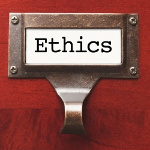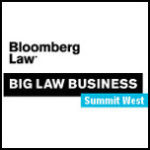By Patty P. Tehrani
Lawyer and Founder of Policy Patty Toolkit
 Thousands of employees are fired at a bank, and a seasoned car engineer pleads guilty to criminal charges. Both cases involve examples of massive fraud with lingering doubt about how and whether the underlying companies can bounce back. And while these well-publicized scandals dominate headlines for a period the repercussions internally have long-term if not a permanent effect. Employees are left to doubt both the viability of their jobs and the future of their organizations. Morale wanes impacting service, productivity, and operations as uncertainty, frustration and anger increase.
Thousands of employees are fired at a bank, and a seasoned car engineer pleads guilty to criminal charges. Both cases involve examples of massive fraud with lingering doubt about how and whether the underlying companies can bounce back. And while these well-publicized scandals dominate headlines for a period the repercussions internally have long-term if not a permanent effect. Employees are left to doubt both the viability of their jobs and the future of their organizations. Morale wanes impacting service, productivity, and operations as uncertainty, frustration and anger increase.
Systemic malfeasance often reveals legal and regulatory issues but results in little to no focus on how the organization’s corporate culture contributed to the events. How can that be? Corporate culture is the character, the foundation of an organization. It is supposed to represent the common beliefs employees and management share about conduct and its consequences.
Another reason corporate culture is critical is the growing importance of the Millennial generation in today’s workforce. Unlike older generations less inclined to question management and corporate direction, this group is not shy about challenging established notions about employer identity and direction. They tend to emote more and use social media to quickly vocalize concerns and issues between an organization’s aspirations and its actions.
Corporate Culture can only be sustained through a history of trust, fair dealing, and ethical behavior. Left unattended or to deteriorate, your organization is susceptible and may suffer irreparable damage. With this in mind, you may want to assess your corporate culture. Below are key factors for a new organization’s culture to leverage or the first step to revitalizing or reshaping culture in an organization looking to change:
• Core Purpose – Vision
• Core Standards – Values
• Core Practices – Rules
• Core People – Leaders and Employees
• Core Understanding – Education and Training
• Alignment with Strategy and Processes
Core Purpose – Vision
The first component of corporate culture is a vision or mission statement that defines the organization’s purpose. The statement should:
• be short and simple;
• guide the actions of an organization;
• set out an overall goal; and
• provide a framework for which the organization’s strategies are formulated.
How do you draft your vision statement? The clearer your vision statement the more effective it is. To help draft the statement, Forbes contributor Patrick Hull considers the following four essential questions a mission statement must answer.
• “What do we do?”
• “How do we do it?”
• “Whom do we do it for?”
• “What value are we bringing?”
Another way to think about the vision statement is that it should tell current and future key stakeholders (employees, partners, shareholders, investors, and the public at large) where the organization is today and where it wants to be tomorrow.
Core Standards – Values
An organization’s culture cannot reside solely with a vision statement and requires standards on how to reach its purpose. That’s why you need to complement your vision statement with the next key component – values. These principles guide your organization’s core behaviors to reach its vision. Values let key stakeholders know how the organization will strive to reach its purpose – in particular – how it will serve its clients, act toward colleagues, and uphold minimum conduct standards. If done properly, they form an ethical foundation for the organization. If truly authentic, they guide the behavior of employees and ultimately assist them in determining what is right and wrong.
Core Practices – Rules
Values have little to no impact if there are no rules – the next component – to dictate an organization’s practices. Values must be integrated into an organization’s practices – principles, policies, and procedures. These rules guide accepted business strategies and objectives. They link up the organization’s Values and Vision with day-to-day operations. Rules identify the key activities and provide a general approach to decision-makers on how to handle issues as they arise. This is accomplished by providing the reader with requirements, possible limits and a choice of alternatives that can be used to ‘guide’ their decision-making process as they attempt to overcome problems.
Core People – Leaders and Employees
An organization’s culture is only sustainable if its people – leaders and employees – embrace it. Charles Ellis, author of What it Takes: Seven Secrets of Success from the World’s Greatest Professional Firms, noted that the best firms are “fanatical about recruiting new employees who are not just the most talented but also the best suited to a particular corporate culture.” That’s why it is critical to hire and maintain people that not only embrace their organization’s culture but also promote and reinforce it through the following means:
• Higher purpose – An organization’s social responsibility and corporate citizenship programs serve a goal greater than maximizing shareholder returns. By highlighting the value that employees can add to society, leaders can inspire them toward behaviors that may increase value. Actions beyond just self-interest and pride in the workplace through social and community help employee loyalty to the organization.
• Examples from the top – Leaders need to set the “tone at the top” and get in front of promoting and fostering the organization’s cultural attributes. One critical aspect is their promotion of accountability. Employees must know and see there is accountability for proven wrongdoing regardless of position or tenure. Failure to apply responsibility for malfeasance can be extremely damaging to corporate culture. This is especially true when leaders are not answerable for their actions, and others with far less power are. This leaves employees and probably others to wonder whether management is truly committed to the organization and its culture. Separately, leaders need to appeal to employees more through their stories and actions than directives. This allows leaders to be more relatable allowing them to reveal something of themselves and show some vulnerability.
• Participation – If an organization truly values its employees it needs to engage them and provide opportunities for them to participate. This can be done by linking the deeds of individuals at any level to key goals and strategies. The drive becomes more of movement allowing employees to drive the culture and not just to follow it. Employees that have a stake in the organization’s success will be more likely to push its initiatives through. With committed and engaged employees, companies can be more productive and possibly more profitable.
Core Understanding – Education and Training
To promote corporate culture, employees need to know what it is. That is why communication is the next core component to developing or fostering an organization’s culture. Some of the questions to ask in how effectively culture is being communicated:
• How is your corporate culture communicated across the organization?
• What message on ethics and compliance is being perceived by employees at the lowest level of the organization?
• How and how often do your measure your corporate culture?
• Are periodic surveys used to measure the organization on culture?
• Have there been any recent developments that require reinforcement or assessment of your culture – for example, acquisition, regulatory finding, major litigation or reputational harm?
• How involved is your management and as appropriate the board in communicating the organization’s culture?
Communication can be formal or informal, but in either case more powerful when done on an ongoing basis and in a manner that is relevant to its audience and easy to follow.
Alignment with Strategy
Culture can help determine the values and habits that shape how an organization’s strategy becomes a reality. If a new strategy conflicts with established practices, employees will likely struggle to change. Aligned strategies and culture help employees manage day-to-day challenges. They are more productive and loyal, and more likely to recommend the organization to friends. Additionally, a strong, sustainable culture helps create a powerful brand that can have positive effects on the bottom line.
Conclusion
There are other factors that influence culture but the components discussed above can provide a well-founded basis for shaping an organization’s culture.
To help you assess and where necessary revitalize or reshape the culture of your organization, consider the following assessment:
• Step 1: Assess your current cultural tendencies:
o Survey employees, clients, and business partners about values:
that are important to them;
they see being expressed in the current culture; and
required to take the organization to the next level.
o Check to see how your culture is supportive of your strategy and visa versa.
o Use the results of the survey to:
better understand your stakeholders – their motivations, experience within your organization, and where they think the organization should be heading; and
identify potential roadblocks and cultural forces that will propel your organization forward.
• Step 2: Launch a discussion and do so on an ongoing basis:
o Share the results of your surveys – both good and bad news, for better transparency.
o Launch discussions with different focus groups to help bring about the desired cultural change.
o Find ways to encourage, solicit and cultivate ideas and behaviors from employees on an ongoing basis to help maintain the culture.
• Step 3: Identify the elements of your culture you want to focus on and review your processes to make sure they are aligned with it. Examples of processes include:
o Leadership behaviors
o Annual budget cycle
o Sales/service approach
o Performance management systems
o HR practices and hiring guidelines
• Step 4: Define a maintenance plan to periodically measure and update your culture as needed to make sure it is maintained and viable. Consider these steps:
o Assess your culture on a regular basis (at least every couple of years but preferably annually) to make sure your culture is moving in the right direction.
o Develop reporting measures that are simple and include minimum and stretch targets, and not be too easy or difficult to reach.
o Assess and update your processes.
o Communicate using different channels of communication to ensure an ongoing dialogue that encourages input from all levels of the organization and possibly some outside of it.
In the end, no organization is without its challenges but creating a viable organizational culture that is sustained properly will most definitely help it and possibly reap great returns.
 Pearl Meyer and the National Association of Corporate Directors will present a complimentary Nov. 10 webcast to review key findings and analysis from research into executive pay practices and offer guidance on select actions that should be considered for 2017 plans and Q1 bonus payouts.
Pearl Meyer and the National Association of Corporate Directors will present a complimentary Nov. 10 webcast to review key findings and analysis from research into executive pay practices and offer guidance on select actions that should be considered for 2017 plans and Q1 bonus payouts.












 About one year after revelations surfaced that Volkswagen AG rigged its diesel cars to cheat emissions tests, it has somehow emerged as “the world’s biggest automaker” in the first six months of 2016, outselling Toyota during that period, according to a
About one year after revelations surfaced that Volkswagen AG rigged its diesel cars to cheat emissions tests, it has somehow emerged as “the world’s biggest automaker” in the first six months of 2016, outselling Toyota during that period, according to a